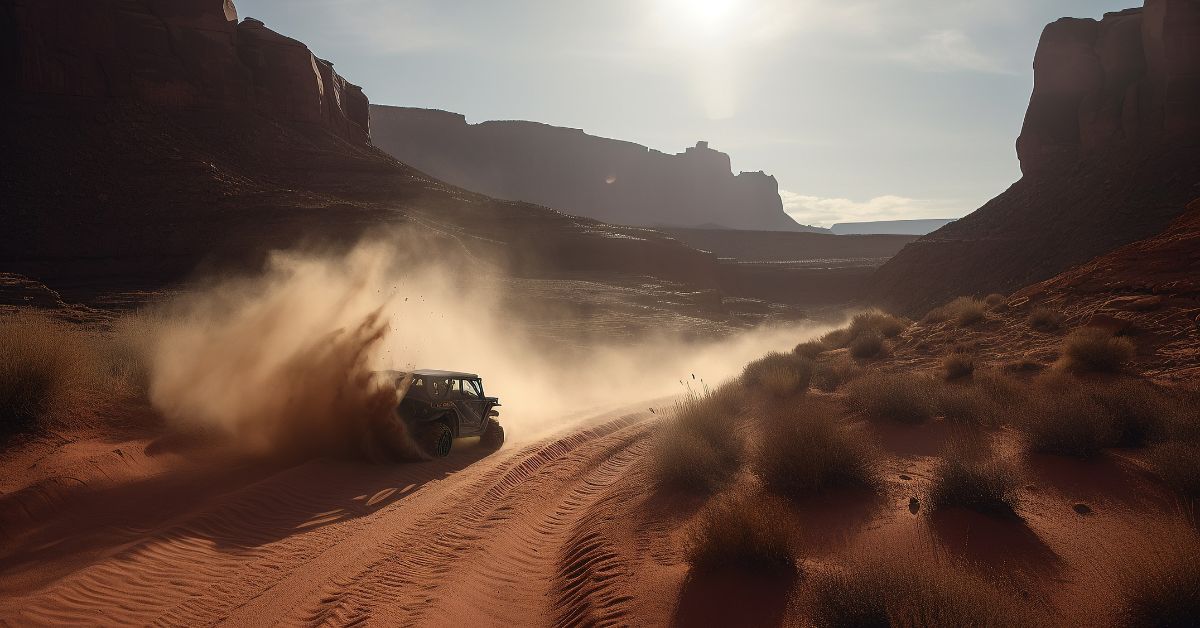Desert vs. Mountain Off-Roading: Differences in Preparation

The thrill of off-roading in a 4×4 is unparalleled, but it requires meticulous preparation to ensure a safe and enjoyable experience. Every off-roading adventure presents unique challenges depending on the terrain. Whether you’re off-roading in the sandy dunes of the desert or the rocky peaks of the mountains, there are many differences in preparation you must learn before your trip.
Determining the Ideal Tire Tread
Determining the ideal tire tread for your upcoming off-roading excursion is crucial for any 4×4 enthusiast. Paddle tires are the preferred choice for desert terrains. Known for their exaggerated and flat paddles, these tires propel your 4×4 forward by scooping and ejecting the sand. This unique design lets your vehicle maintain traction on loose or shifting surfaces.
Mountain terrains feature more stable—albeit sharp and unpredictable—off-roading trails. Here, mud-terrain or rock-crawling tires are more suitable. These tires feature aggressive tread patterns, providing excellent traction over rocky surfaces and steep inclines. They boast large, chunky lugs and deep voids to maximize grip and control on uneven terrain. Plus, many of these tires feature reinforced sidewalls for extra puncture protection. Regardless of your final destination, equipping your vehicle with the right tire treads is among the most important 4×4 body modifications you must make before your trip.
Packing Environment-Specific Gear
Certain gear is universally essential in any off-roading adventure, regardless of the environment. This includes items such as a first-aid kit for medical emergencies, a fire extinguisher for safety, and a GPS for navigation. However, the gear requirements become more specialized when we delve into specific environments.
In desert terrains, for instance, off-road recovery tracks are crucial. These items provide much-needed traction on the soft, shifting sand, helping your vehicle move forward without getting bogged down. On the other hand, mountainous environments demand the use of recovery winches. These powerful devices can pull your 4×4 out of sticky situations, such as when it’s stuck in mud or wedged between rocks.
Practicing Practical Driving Techniques
Mastering the art of rock crawling is invaluable when embarking on a mountain off-roading adventure. This technique involves driving at a slow and controlled pace over rocky terrain. The driver must strategically place each tire on the highest point of the rocks to maintain vehicle balance and prevent damage to the undercarriage.
In contrast, navigating sand dunes in the desert requires a different set of skills. One of the most important rules to follow is the straight-up-and-down rule. This means you should drive straight up and down rather than at an angle when approaching a sand dune. Driving at an angle increases the risk of your vehicle rolling over due to the unstable nature of sand.
As the one behind the wheel, it is your responsibility to understand the differences in preparation between desert and mountain off-roading. The right tires, appropriate gear, and adept driving skills are all part of the adventure. Gear up, drive safe, and enjoy the thrill that off-roading brings!





